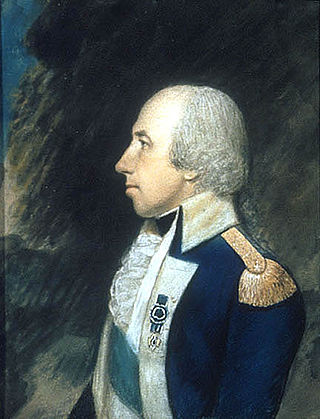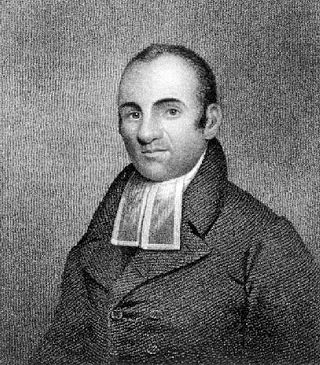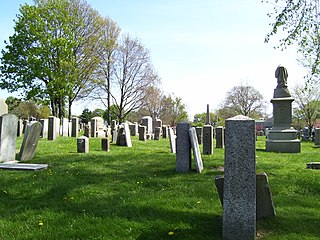
Israel Putnam, popularly known as "Old Put", was an American military officer and landowner who fought with distinction at the Battle of Bunker Hill during the American Revolutionary War (1775–1783). He also served as an officer with Rogers' Rangers during the French and Indian War (1754–1763), when he was captured by Mohawk warriors. He was saved from the ritual burning given to enemies by the intervention of a French officer with whom the Mohawk were allied. Putnam's courage and fighting spirit became known far beyond his home of Connecticut's borders through the circulation of folk legends in the American colonies and states celebrating his exploits.

Lebanon is a town in New London County, Connecticut. The town is part of the Southeastern Connecticut Planning Region. The population was 7,142 at the 2020 census. The town lies just to the northwest of Norwich, directly south of Willimantic, 20 miles (32 km) north of New London, and 20 miles (32 km) east of Hartford. It is best known for its role in the American Revolution when it was a major base of American operations, and for its historic town green, which is one of the largest in the nation and the only one still used partially for agriculture.

Roger Sherman was an American statesman, lawyer, and a Founding Father of the United States. He is the only person to sign four of the great state papers of the United States related to the founding: the Continental Association, Declaration of Independence, Articles of Confederation, and U.S. Constitution. He also signed the 1774 Petition to the King and 1775 Olive Branch Petition.

David Humphreys was an American Revolutionary War colonel and aide de camp to George Washington, a secretary and intelligence agent for Benjamin Franklin in Paris, American minister to Portugal and then to Spain, entrepreneur who brought Merino sheep to America, and member of the Connecticut state legislature. He also was a prolific poet and author and a member of the Hartford Wits. As speechwriter to George Washington during his administration, Humphreys was the nation's first U.S. presidential speechwriter.

David Bushnell , of Westbrook, Connecticut, was an American inventor, a patriot, one of the first American combat engineers, a teacher, and a medical doctor.

The Sons of Liberty was a loosely organized, clandestine, sometimes violent, political organization active in the Thirteen American Colonies founded to advance the rights of the colonists and to fight taxation by the British government. It played a major role in most colonies in battling the Stamp Act in 1765 and throughout the entire period of the American Revolution.

The Founding Fathers of the United States, commonly referred to simply as the Founding Fathers, were a group of late-18th-century American revolutionary leaders who united the Thirteen Colonies, oversaw the War of Independence from Great Britain, established the United States, and crafted a framework of government for the new nation.

Joseph Warren, a Founding Father of the United States, was an American physician who was one of the most important figures in the Patriot movement in Boston during the early days of the American Revolution, eventually serving as President of the revolutionary Massachusetts Provincial Congress. Warren enlisted Paul Revere and William Dawes on April 18, 1775, to leave Boston and spread the alarm that the British garrison in Boston was setting out to raid the town of Concord and arrest rebel leaders John Hancock and Samuel Adams. Warren participated in the Battles of Lexington and Concord the following day, the opening engagements of the American Revolutionary War.

Brigadier-General Rufus Putnam was an American military officer who fought during the French and Indian War and the American Revolutionary War. As an organizer of the Ohio Company of Associates, he was instrumental in the initial colonization of the Northwest Territory in present-day Ohio following the war. He was known as "Father of the Northwest Territory".

Joseph Plumb Martin was a soldier in the Connecticut Militia and Continental Army during the American Revolutionary War, and was mustered out as a 23-year-old Sergeant in a Sapper company. His published narrative of his experiences, re-discovered in the 1950s, has become a valuable resource for historians in understanding the conditions of a common soldier of that era, as well as the battles in which Martin participated.

Lemuel Haynes was an American clergyman. A veteran of the American Revolution, Haynes was the first black man in the United States to be ordained as a minister.
Prince Whipple (1750–1796) was an African American slave and later freedman. He was a soldier and a bodyguard during the American Revolution under his enslaver General William Whipple of the New Hampshire Militia who granted him his freedom after the war. Prince is depicted in Emanuel Leutze's painting Washington Crossing the Delaware and Thomas Sully's painting Passage of the Delaware.

Mikveh Israel Cemetery is the oldest Jewish cemetery in Philadelphia, Pennsylvania, giving evidence of a settled community as early as 1740. A number of outstanding patriots, pioneers, and other notables of the Jewish faith who made important contributions to the history and freedom of America during the Colonial and Revolutionary period were interred here, and for this reason, in 1959, by an act of Congress, the burial ground was designated as a unit of the Independence National Historical Park, while continuing to be maintained by the sponsoring Congregation Mikveh Israel. The cemetery was certified by the Philadelphia Historical Commission, and in 1971, it was listed on the National Register of Historic Places.

Nero Hawley was an African-American soldier who was born into slavery in North Stratford, Connecticut, and later earned his freedom after enlisting in the Continental Army in place of his owner, Daniel Hawley, on April 20, 1777, during the American Revolution. His life is featured in the 1976 book From Valley Forge to Freedom, which also notes other areas of present-day Trumbull, Connecticut associated with Hawley.

Black Patriots were African Americans who sided with the colonists who opposed British rule during the American Revolution. The term "Black Patriots" includes, but is not limited to, the 5,000 or more African Americans who served in the Continental Army and Patriot militias during the American Revolutionary War.

Joseph Wanton Sr. was a merchant and governor in the Colony of Rhode Island and Providence Plantations from 1769 to 1775. Not wanting to go to war with Britain, he has been branded as a Loyalist, but he remained neutral during the war, and he and his property were not disturbed.

The Common Burying Ground and Island Cemetery are a pair of separate cemeteries on Farewell and Warner Street in Newport, Rhode Island. Together they contain over 5,000 graves, including a colonial-era slave cemetery and Jewish graves. The pair of cemeteries was added to the National Register of Historic Places as a single listing in 1974.
Primus Hall was born a slave. He was the son of Prince Hall, an abolitionist, Revolutionary War soldier and founder of the Prince Hall Freemasonry.

Egerton Swartwout was an American architect, most notably associated with his New York City architectural firm Tracy and Swartwout and McKim, Mead & White. His buildings, numbering over 100, were typically in the Beaux-Arts style. Six of his buildings are recognized on the National Register of Historic Places, and three others have been given landmark status by their city commissions.
John Ely was a Connecticut surgeon and Colonel in the American Revolution.

















